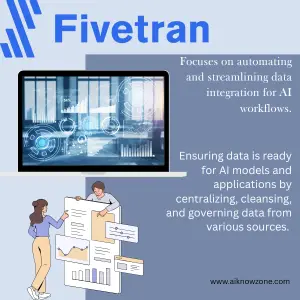Mage
Explore how Mage AI revolutionizes data engineering with its open-source platform, offering magical workflows and intelligent data pipelines.
Description
Mage AI Review: Is This Data Engineering Magic? ✨
Alright, data enthusiasts, let’s dive into the world of Mage AI! Ever felt like wrangling data pipelines was more like herding cats? 🐱 Well, Mage aims to change that. It’s an open-source data pipeline tool that promises to make transforming and integrating data feel less like a chore and more like… well, magic! ✨ The tool combines the flexibility of notebooks with the robustness of modular code, aiming to provide the best of both worlds. From what I’ve gathered, it is designed to help data engineers build, automate, and orchestrate data flows without the usual headaches. Let’s see if it lives up to the hype, shall we? This review will explore the features, benefits, and potential drawbacks of using Mage for your data engineering projects.
Mage AI seems like a really compelling solution for complex data-related tasks that can easily become a mess of dependencies and configurations, so any tool that helps make this process more automated and easier to manage gets a huge plus from me. It’s important to find tools that allow developers and engineers to be more efficient since time is always one of the constraints on every project. Also, it’s exciting that the people at Mage are working to make this happen with a product that is open source and seems to be ever-expanding into new and innovative territories that simplify the data orchestration processes, and boost the team’s productivity.
Key Features and Benefits of Mage AI
- Hybrid Framework: Combines the flexibility of notebooks with the rigor of modular code, making data transformation more intuitive and reliable.
- Dynamic Blocks: Enables adaptive, parallel processing in data pipelines, optimizing performance and efficiency.
- SQL Blocks: Revolutionizes SQL-based data operations with an intuitive feature set.
- Open-Source: Being open-source, Mage offers extensibility and customization to fit your exact operational DNA, which is a big win for those wanting to tailor the tool to their specific needs.
- Seamless Integrations: Integrates effortlessly with various data sources and destinations using pre-built connectors, saving you time and effort.
- Automated Orchestration: Automates the running, monitoring, and orchestrating of thousands of pipelines without losing sleep, promising a better work-life balance.
How It Works (Simplified)
Using Mage AI sounds pretty straightforward. First, you’ll need to install it (check out their GitHub for instructions). Then, you start building your data pipeline using their intuitive interface. You can connect to various data sources, transform the data using Python or SQL blocks, and then load it into your data warehouse. The platform offers real-time monitoring so you can keep an eye on your pipelines and ensure everything is running smoothly. Also, with the notebook-style interface, the platform attempts to make all of the different pieces and functionalities easy to use with no complicated instructions and lots of visual guides to help you along the way.
Real-World Use Cases for Mage
- Real-Time Analytics: I could see using Mage to build a real-time analytics dashboard for a marketing campaign. By connecting it to our ad platforms, transforming the data to calculate key metrics, and then visualizing it in a dashboard, we could get instant insights into campaign performance.
- Data Integration: Imagine needing to consolidate data from multiple e-commerce platforms into a single data warehouse for reporting purposes. Mage could automate the extraction, transformation, and loading of this data, saving hours of manual work.
- Machine Learning Pipelines: I think Mage would be great for building machine learning pipelines. You can use it to ingest data, perform feature engineering, train models, and deploy them – all within the same platform.
- Customer Data Enrichment: You could use Mage to enrich customer data by integrating it with third-party sources, providing a more complete view of your customers and enabling better personalization.
Pros of Mage
- Open-source and highly customizable.
- Combines notebook flexibility with modular code rigor.
- Simplifies data pipeline orchestration and automation.
- Offers dynamic blocks for adaptive processing.
- Provides pre-built connectors for seamless integration.
Cons of using Mage
- Might have a learning curve for those new to data engineering concepts.
- As an open-source tool, community support might be slower than enterprise solutions.
Mage Pricing
As Mage is an open-source tool, the core platform is free to use! However, keep in mind that you’ll likely incur costs for infrastructure (e.g., cloud compute, storage) to run your pipelines.
Conclusion
In conclusion, Mage AI is shaping up to be a powerful tool for data engineers looking to streamline their workflows and build magical data pipelines. If you’re comfortable with open-source solutions and want a flexible, customizable platform, Mage is definitely worth checking out! Whether you’re building real-time analytics dashboards, integrating data from multiple sources, or deploying machine learning models, Mage offers a lot of potential. So, go ahead and give it a try – you might just find yourself under its spell! 🧙♂️






Reviews
There are no reviews yet.